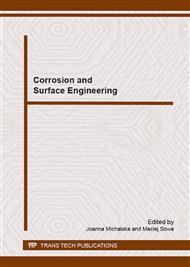p.207
p.213
p.217
p.221
p.225
p.229
p.233
p.239
p.243
The Consequence Assessment of Gas Pipeline Failure due to Corrosion
Abstract:
In this paper, a qualitative consequence assessment method for damaged urban natural gas pipelines is proposed. It focuses on identifying reputation loss factors according to stakeholders’ (investors, customers, employees, and communities) perceptions. The analytical hierarchy process (AHP) method is applied to prioritize these factors. Results show that the loss of customer confidence ranks as the highest contributor to an operator’s reputation loss due to a pipeline accident. Thus, better risk assessment of pipeline damage due to corrosion will be achieved with the inclusion of reputation loss in the consequence assessment. Hence, decision making in pipeline repair, inspection, and maintenance can be improved as well as a company’s annual profit margin.
Info:
Periodical:
Pages:
225-228
Citation:
Online since:
January 2015
Keywords:
Price:
Сopyright:
© 2015 Trans Tech Publications Ltd. All Rights Reserved
Share:
Citation:


